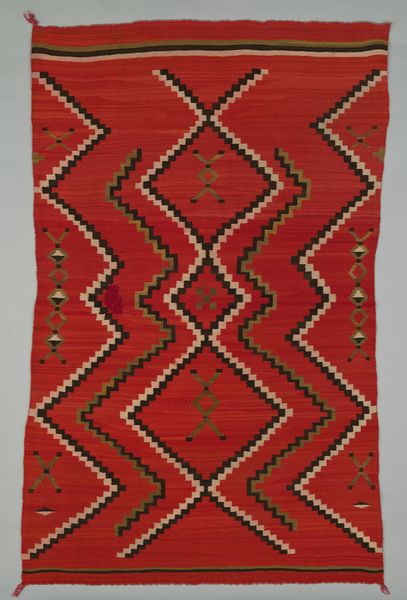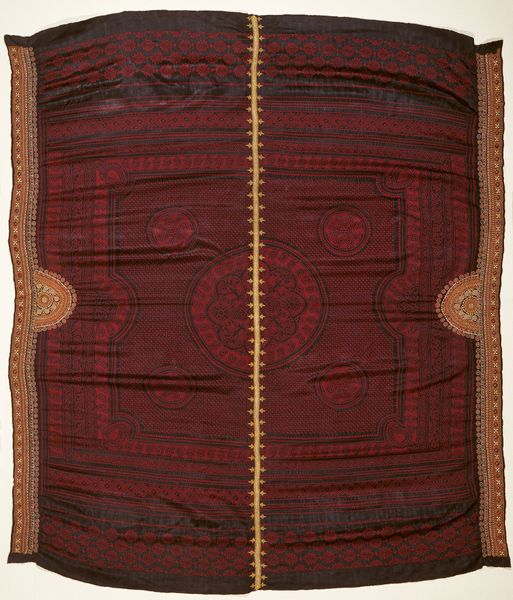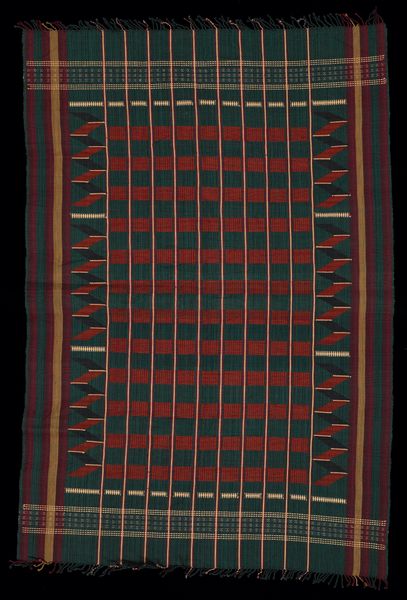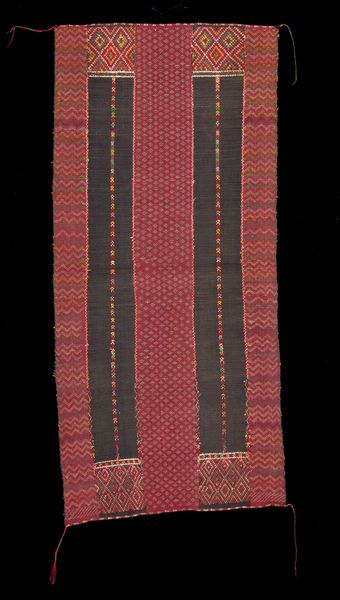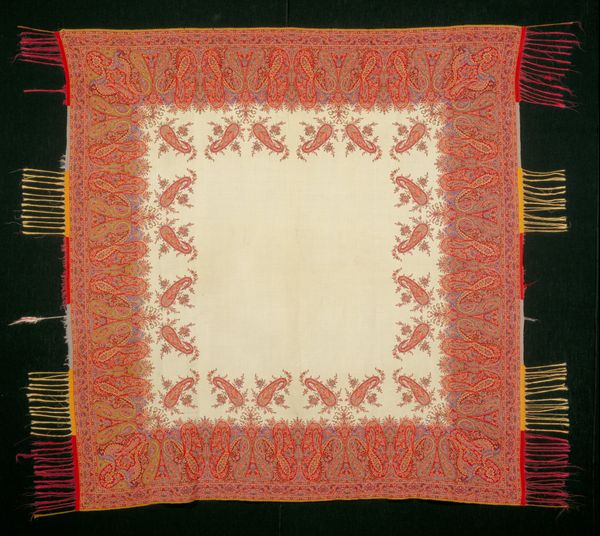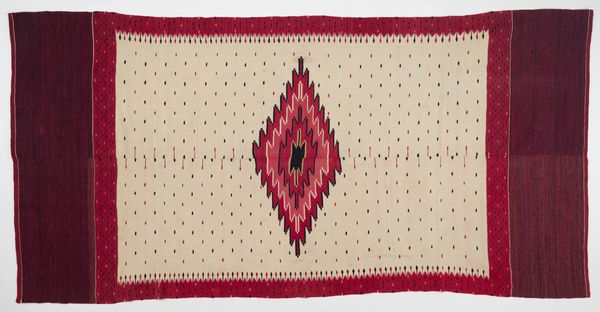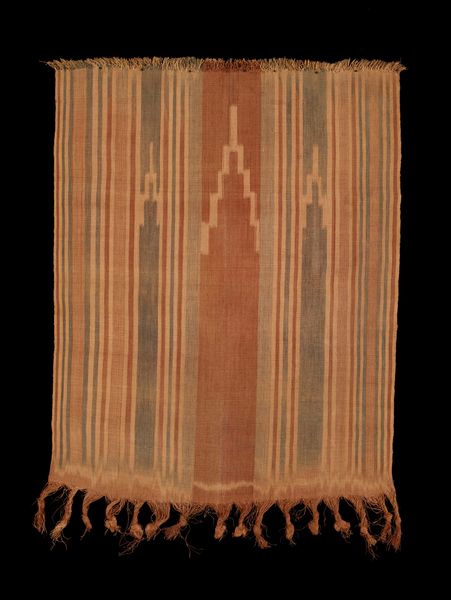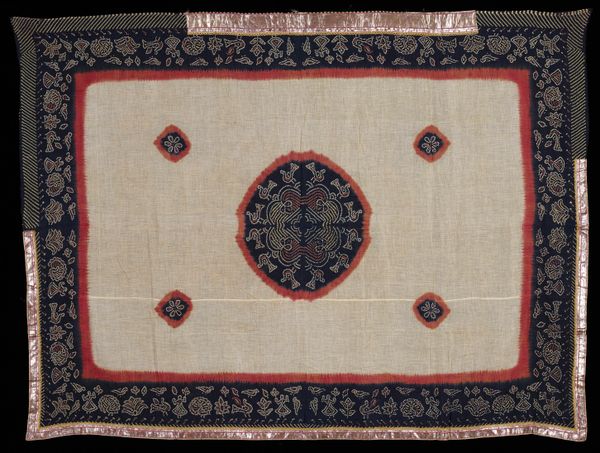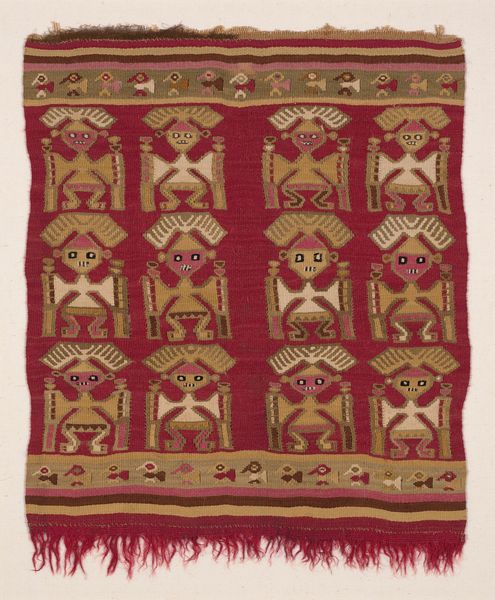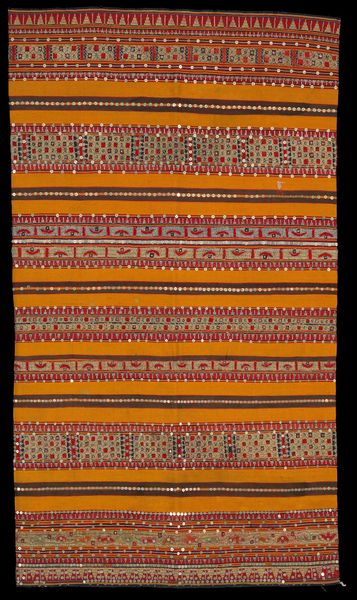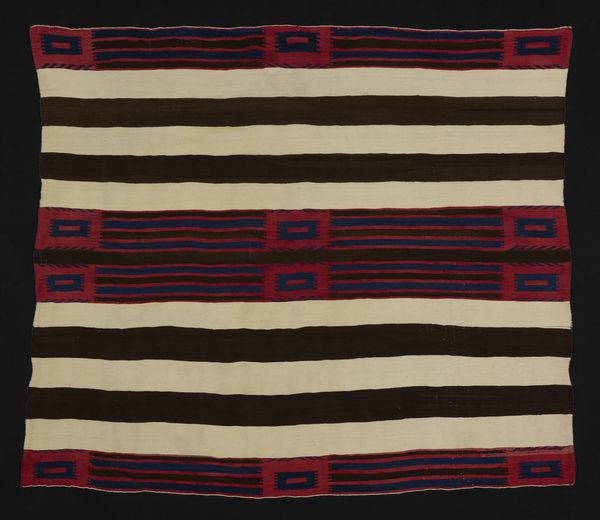
fibre-art, weaving, textile
#
fibre-art
#
weaving
#
textile
#
geometric
#
indigenous-americas
Dimensions: 308 × 157.5 cm (121 1/4 × 62 in.) Warp repeat: 47-48.4 cm (18 1/2-19 in.) Weft: point repeat
Copyright: Public Domain
This textile was woven by a Navajo, or Diné, artist using hand-spun wool. Look closely, and you will see that its tightly packed weft creates a surface with significant heft and density. This reflects the skill required to consistently interlock the horizontal weft threads into the vertical warp, obscuring it completely. The red and black crosses that form the design were achieved through a resist-dyeing technique or hand painting. Such blankets demanded many hours of labor, from shearing sheep to spinning, dyeing, and finally weaving. The bold geometric patterns of Navajo textiles have long held appeal in the Euro-American market. By the late nineteenth century, when this blanket was likely made, weaving had become a vital source of income for the Diné. These textiles were not simply commodities. They embodied cultural values and artistic expression. Paying close attention to materials, making, and context allows us to fully understand the meaning of this blanket, challenging traditional distinctions between fine art and craft.
Comments
No comments
Be the first to comment and join the conversation on the ultimate creative platform.
